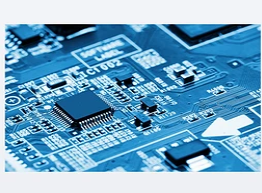PCB is not only the most important mechanical support for fixing, linking, and assembling various components, components and integrated circuits of an electronic product, but also enables electronic products to have high reliability, good consistency, high mechanical strength, and light weight., Small size, easy to standardize and other advantages and characteristics of basic components. Although PCB can be regarded as a high-tech product in the electronics industry, the development of PCB is not only challenged by its own cost-effectiveness issues, but also challenges from external energy conservation and environmental protection, especially the energy conservation and environmental protection requirements of electronic product manufacturers. The requirements of society. Therefore, PCB must take the road of green development, and must place energy conservation, consumption reduction, emission reduction and pollution control on an important position in the development of the PCB industry.
With the rapid development of the industry, competition in the PCB industry has become increasingly fierce. Energy conservation and consumption reduction are not only implementing the national energy conservation and emission reduction policy, but also an important means for enterprises to reduce production costs and improve their competitiveness. The energy-saving of PCB companies can only rely on technological progress, especially the innovative PCB production process. Although the overall situation is relatively difficult, it is possible to start locally and change the lengthy PCB process step by step. It is believed that the transformation of "long process" into "short process" will surely achieve energy saving. At present, we can proceed from the following aspects.
First, we should make unremitting efforts to continue to promote digital inkjet printing technology to replace screen printing, and to use 3D printing technology to replace the etching of PCB electronic circuits. This will be one of the ways for PCB companies to achieve energy saving.

Second, vigorously promote the compressed air energy saving program. Compressed air is the most widely used in PCB companies. The energy consumption of compressed air in most manufacturers accounts for 20%-35% of all power consumption. Focusing on the energy saving of compressed air can make the PCB industry's energy saving work get twice the result with half the effort.
Third, increase efforts to take effective measures in the PCB electroplating process, use energy-saving electroplating power supplies, and improve electroplating efficiency, which can also receive surprising energy-saving effects. For example, in the field of hole metallization, the direct electroplating technology of organic conductive film that has emerged in recent years has been recognized and used by more and more companies. The direct electroplating technology of polymer conductive film, which combines many advantages, has also been accepted by the market. It is widely used. The hole metallization process has no formaldehyde gas emission, which not only greatly improves the working environment, but also has no complex waste water, simple treatment method, greatly saves water and electricity, greatly reduces operating costs, and horizontal transmission is easy to automate.
Fourth, promote high-efficiency and energy-saving motors in PCB companies and carry out technological transformation of PCB production equipment. Industry associations can take the lead in introducing energy-saving service companies and institutions, and innovate energy-saving models, which is expected to achieve a power saving effect of about 20%.
At present, the clean production of PCB industry has started, but it still needs to move forward steadily. First, the most important thing is to ensure that wastewater discharge meets the standard at all times, and all indicators such as PH, Cu, Ni, COD, and ammonia nitrogen must meet the standards 24 hours a day, 365 days a year. All PCB companies must have a sense of law-abiding, honesty, and environmental protection. Second, carry out waste water recycling. It is necessary to formulate standards for waste water reuse and strictly require the proportion of treated waste water to be returned to the production line for use. Third, vigorously control the problem of heavy metal pollution in PCB production, treat the copper and a small amount of nickel in the discharged wastewater in accordance with environmental protection discharge standards, minimize the content of copper and nickel in the discharged wastewater, and promote the use of these two in the wastewater. This kind of metal is produced and processed into metal mud, which is used as the raw material of the smelter to realize waste recycling. Fourth, strengthen cooperation with potion manufacturers to develop environmentally friendly potions; because environmentally-friendly chemical potions emit less exhaust gas, waste water, and waste, they are easy to handle, and the working environment is friendly, and the health of workers is also more protected. Fifth, actively cooperate with electrical and electronic complete machine companies to do a good job in the restriction of the use of hazardous substances in products (RoHS).
In general, the development of the PCB industry relies on technology and energy conservation and environmental protection, but the current energy conservation and environmental protection are more important to the PCB industry, and even directly affect the survival of some PCB companies. The realization of green manufacturing in the PCB industry cannot be achieved overnight. It must be regarded as the development direction of the industry and strive to promote it; this requires the promotion of laws and regulations, the guidance of policies, the formulation of standards and regulations, and the creation of an atmosphere of corporate social responsibility; At the same time, industry organizations need to play a role, unite, lead enterprises, cooperate with each other, and develop in coordination; finally, they must abide by market rules and give play to the role of market mechanisms in allocating resources.